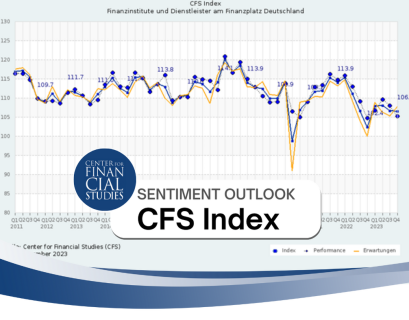Nearly 9,000 kilometers separate the capital cities of Berlin and Tokyo, but in many ways, there is very little distance between Germany and Japan. Both countries are “value partners” that actively reinforce their bilateral relationship (“transformation partnership”), both are members of multilateral fora like the G7, and they have commonalities in their “high tech” economic profile. Germany and Japan are also among the largest trading nations globally (rank 3 & 4). They, hence, rely on the undisturbed functioning of global trade and supply chains to provide sources of demand for their exports and of supply of input materials and components for domestic value creation.
In the context of Germany’s and Japan’s net zero commitments, both countries face similar transformation needs. This implies that potential global supply chain disruptions do not only interfere with some of the traditional hallmarks of their manufacturing industries – automotive, electronics, pharmaceuticals, etc. – but also present risks to the adequate supply of the key technologies that are needed to realize their emissions-reduction targets. The COVID-19 Pandemic and the war in Ukraine are just recent real-world examples of large-scale disruptions affecting both countries heavily. Governments are starting to respond with initial strategies and policies, including the US, EU, and Japan.
For an effective and efficient response to the risks associated with global supply chains we recommend a 3-step approach:
- Perform a comprehensive vulnerability analysis that assesses strategically important goods with respect to, e.g., import intensity to identify substantial supply dependencies from individual trade partners (directly [tier 1] but also indirectly via sub-supplier relationships [tier 2 and beyond]).
- Define a set of strategic measures to mitigate identified vulnerabilities by reducing the likelihood of critical supply disruptions or limiting the impact should disruptions occur.
- Seek alignment and build cooperations with like-minded partners with a view to avoiding competing mitigation strategies, to leveraging on pooled resources, and to improving position vis-à-vis 3rd countries; Germany and Japan are suitable partners, especially given their weight in global trade.
To make this tangible in light of Germany’s and Japan’s transformation partnership, we conducted an outside-in vulnerability analysis (step 1) for solar panels as an example of a key net zero technology with limited domestic production capacities. We focused our analysis on an in-depth assessment of tier 1 and 2 bilateral trade flows along the solar panel supply chain. This analysis indicated for both countries a substantial reliance on China (details in annex): Both countries import more than two-thirds of solar panels from China. This means that any disruptions to the supply of solar panels from China can significantly slow down the expansion of renewable power generation in Germany and Japan, putting net zero and industrial objectives at risk. Import concentrations in components and raw materials that are inputs to solar panels also imply that final assembly cannot be shifted domestically to compensate supply shortfalls on short notice.
Potential strategic measures (step 2) to mitigate the identified concentration risks may generally aim at:
- Creating awareness and transparency of the risks
- Lowering the likelihood of critical supply disruptions by
- Reinforcing the stability of existing supply relationships
- Reducing global supply chain concentrations (i.e., domestic and international supply diversification, reduction in final demand)
- Facilitating a swift and effective response to disruptions to mitigate acute impacts
Industry experts highlight that a strategy to mitigate the risks from disruptions in global supply chains should take a comprehensive, coordinated, and cross-sector approach. While the much-debated reshoring/nearshoring of production can be part of such a mitigation strategy, experts do not consider this to be of critical importance or even desirable at scale. Rather, a policy mix should be sought. In addition, policy responses need to take into account the different nature of concentrations (global vs. economy-specific) and potential causes for disruptions (e.g., localized vs. systemic, root cause).
Domestic actions that are not coordinated with global partners may create inefficiencies such that bilateral and multilateral cooperation among partners, such as Germany and Japan and the broader G7, could be sought (step 3). The more partners cooperate, the more effective and efficient measures can be. Yet, alignment of multiple national interests may slow down action such that bilateral coordination may allow for more timely risk reduction. Areas of potential cooperation between Germany and Japan include:
- Work towards reinforcement of a global, rule-based, and enforceable trade organization
- Coordinate import and export diversification priorities to limit price competition in the same markets
- Pool resources to support build-up of production capacities in new 3rd country locations (e.g., in relation to raw materials extraction)
- Form research partnerships related to alternative materials, manufacturing processes, etc. to ultimately lower domestic demand for at-risk imports
- Cooperate in enhancing compatibility of components to allow for multi-usability in case of supply disruptions
- Facilitate wide-spread adoption of common product standards as well as content and manufacturing requirements to create global demand for domestic production (e.g., via public procurement requirements)
Banks have a catalyst role along the above mitigation measure types. For example, they can create awareness of risks from global supply chain disruptions by engaging their customers on the topic and considering these risks within their loan origination processes (up to potential risk-based pricing implications). The build-up of any domestic or foreign production capacities will require substantial volumes of funding, presenting a business opportunity for banks while reducing funding costs of the real economy through banks’ supply of private capital. Also, banks can deploy their full set of trade financing and hedging solutions to facilitate diversification of trade flows by offering financial risk protection and enhancing liquidity/working capital management.
Annex







